In one of the most eagerly-anticipated e-Bike launches, Curtiss Motorcycles lifted the wraps off its Zeus e-Bike at The Quail Motorcycle Gathering in Carmel, California, on May 5th. Company founder Matt Chambers had claimed, “We’re going to create a new environment for the second and third year onwards—going forward based upon what our projections are, and I think we’ll have a pretty good idea from when we strike the match on May 5.” True to that promise, the Zeus is slated to commence production in 2020, after further development, and taking the temperature of their customers’ reactions to the radical new machine unveiled at the Quail.
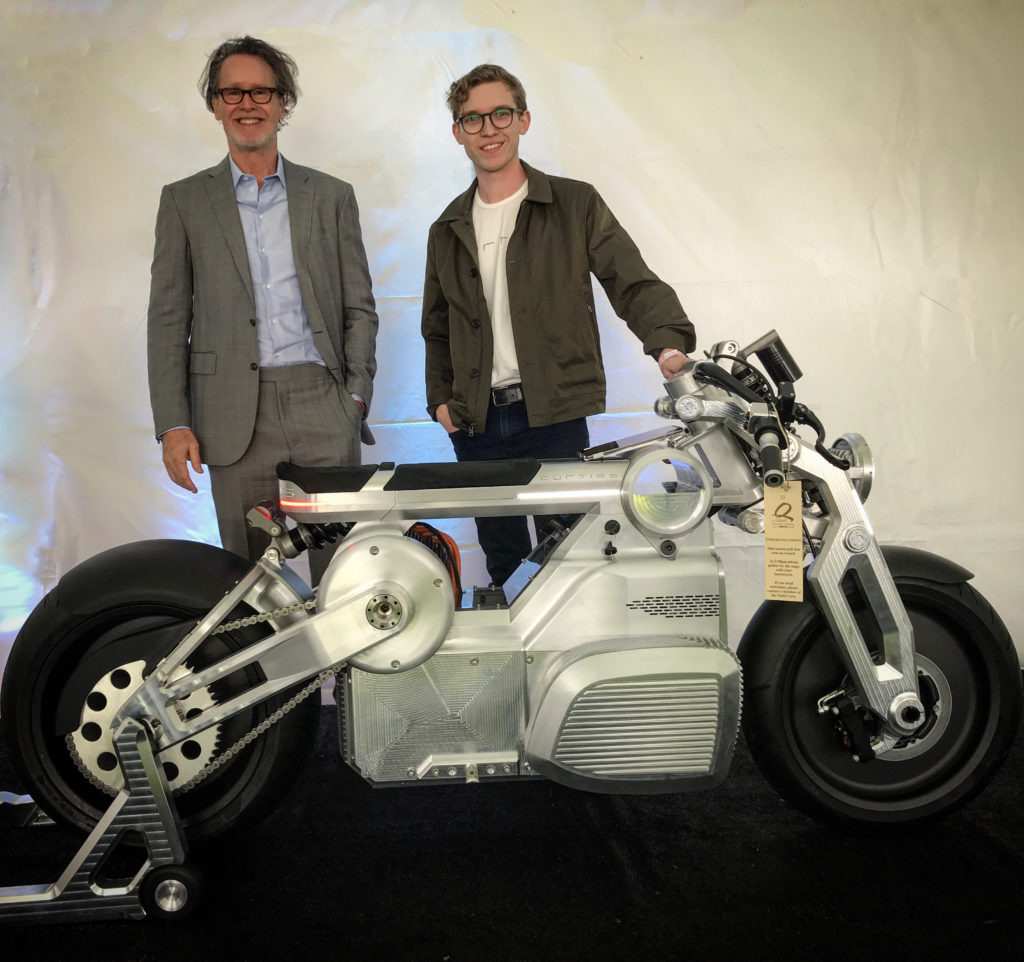
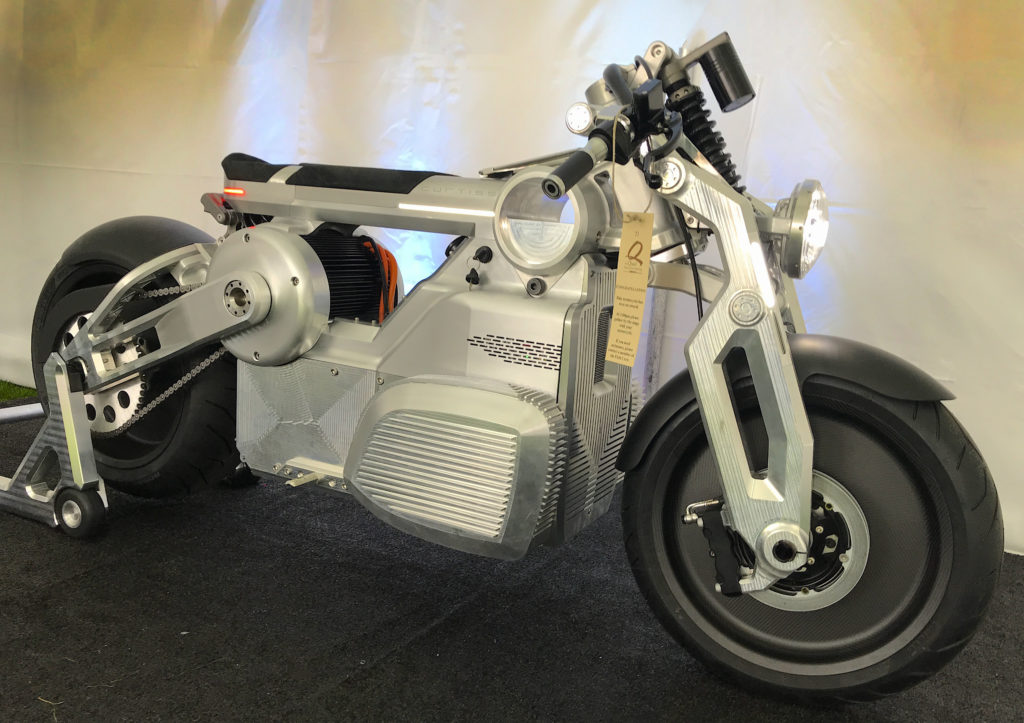
‘T’ shaped battery compartments [Paul d’Orléans]
Jordan, walk me through the design process timeline from last August when Matt Chambers announced that his company was going to change its name and design focus.
“By the time the announcement was made last year by Matt, this project was already deep into development. Curtiss as a brand has been in development for almost eight years now, and Zeus specifically started on the drawing board about two years ago.
For the last three years, I’ve been carefully developing a new design DNA for the brand, and Zeus is the first product from us to showcase that DNA publicly. Many other products have been in development alongside Zeus, so those products will be making their debuts soon.”
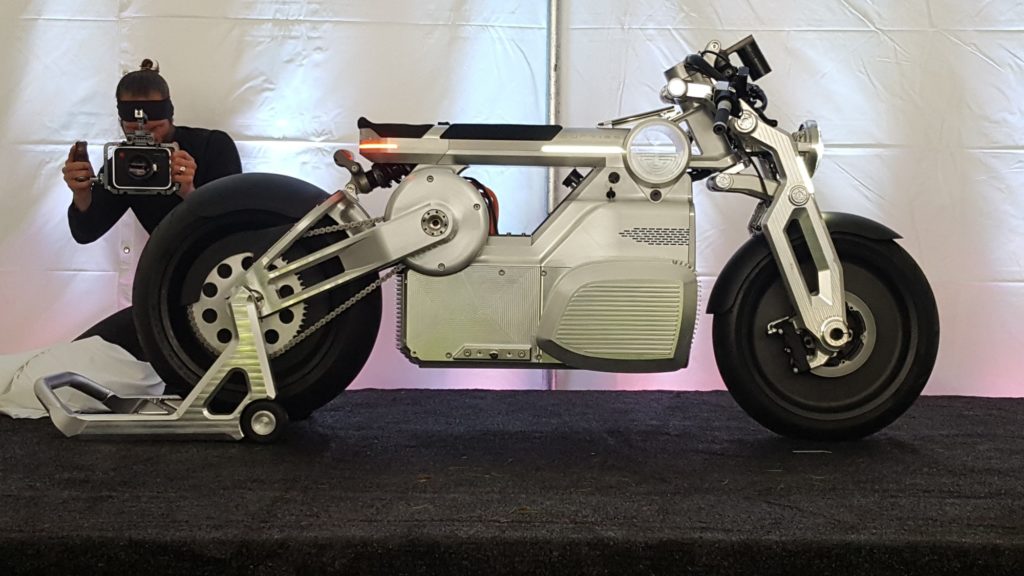
“Zeus specifically came onto the drawing board approximately two years ago. Before that, the discussion had existed for several years. Internally, Curtiss knew that it was time to create an honest electric motorcycle, so the company spent years exploring what that meant. Zeus showcases Curtiss’s first battery configuration, internally labeled ‘T-Block’.
Alongside Zeus, several other “Block” battery configurations came to exist. Curtiss design DNA is organic, pure, and simple minimalism. In order to be sure that Curtiss products maintain that DNA is critical, so the process takes time; sometimes, it’s necessary to even get out of the way and allow the products themselves to organically become what they want. It’s a process that cannot be rushed.”
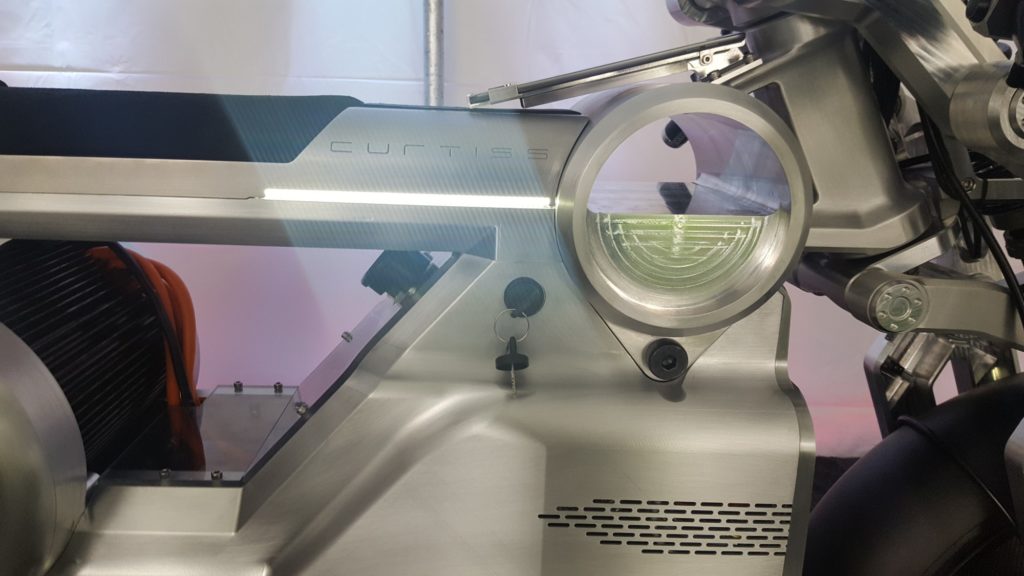
“I agree 100 percent! The number one driving factor behind the design/style of a motorcycle is its package. ICE motorcycles all have, more or less, the same components, so they have all grown to accommodate similar looks and proportions. Electric motorcycles have completely different components, so there’s no need for them to look, or be packaged like, traditional ICE motorcycles. This is where we believe our industry is missing the mark.
Today’s electric motorcycles appear to have been designed around traditional ICE motorcycle packages, proportions, and styles. This has led nearly all of them to have faux gas tanks and other aesthetics that we believe to be dishonest to the technology that they carry. With Zeus, and its siblings to follow, Curtiss has redefined the package and layout of the motorcycle. We have arranged the new electric components in ways that we believe are advantageous over ICE components in terms of weight distribution and rider ergonomics.”
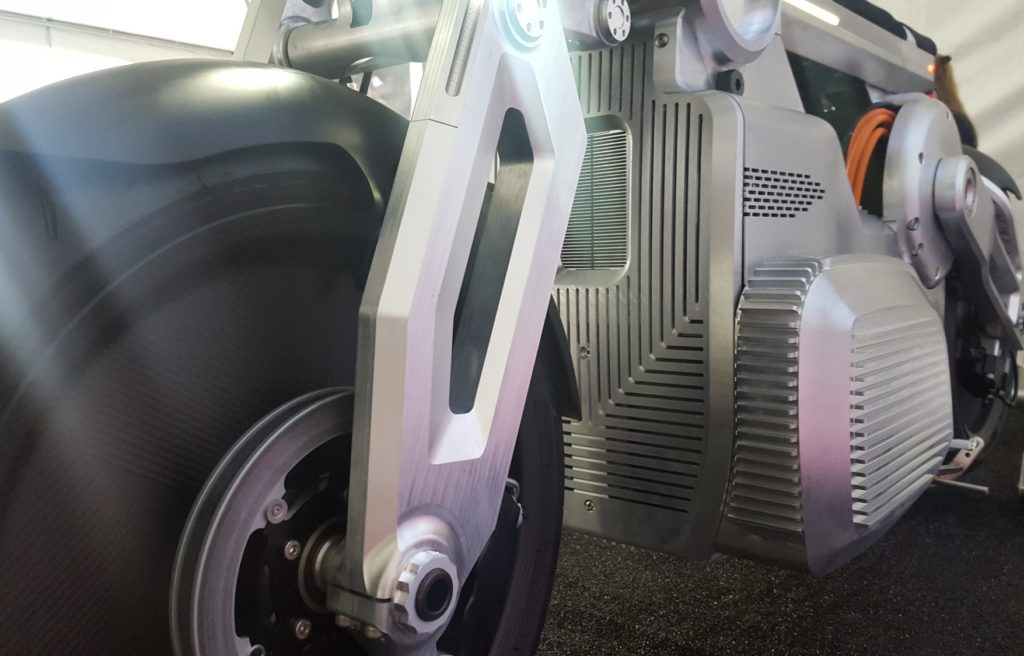
“From the moment I was hired on at Curtiss, Matt has given me zero limitations. He’s created a culture within our brand that allows my creative department the freedom it needs to generate new, exciting ideas and execute on them. Although I have the capability to design and think so freely, that does not mean that I don’t tap Matt’s extraordinary wealth of knowledge in motorcycle design, specifically proportion.
With nearly 30 years of executive experience in our industry (more than most), Matt has a near infinite understanding of motorcycle design, which has been an invaluable asset in creating this new brand family.”
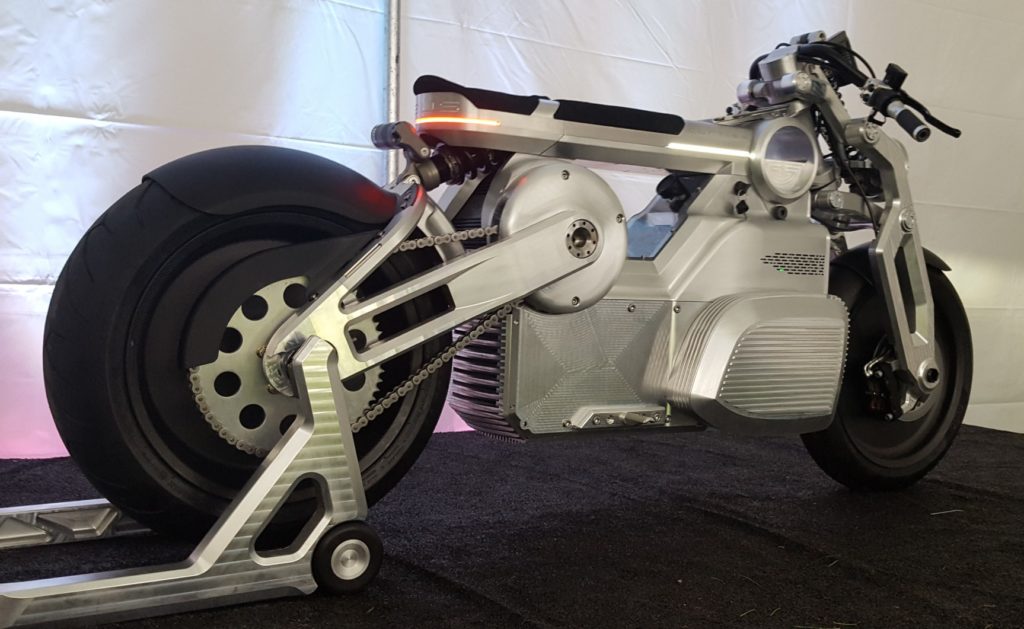
“The Zeus concept prototype that we showed at The Quail this year is slated for a 2020 model year production release, with production likely beginning in early Fall 2019. Our long-term product strategy includes having models positioned at a variety of price points, meaning there will be something available for nearly every pocketbook. These models will include a great selection of genres, forms, power, and range that will satisfy the needs of every rider out there. Every single one of these models are already in design and development.”
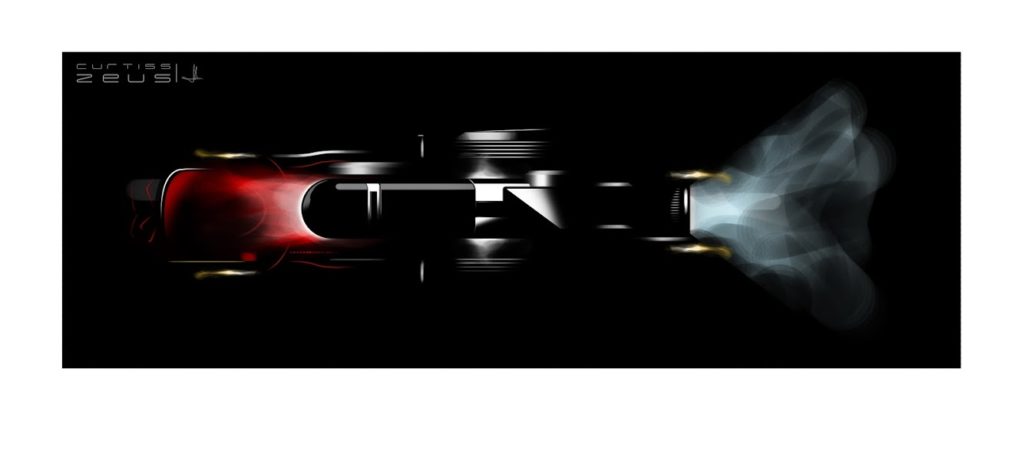
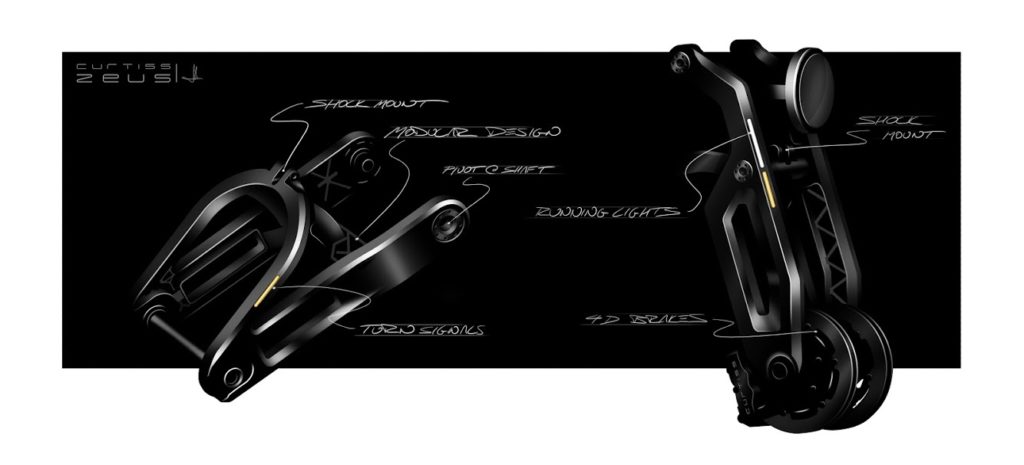
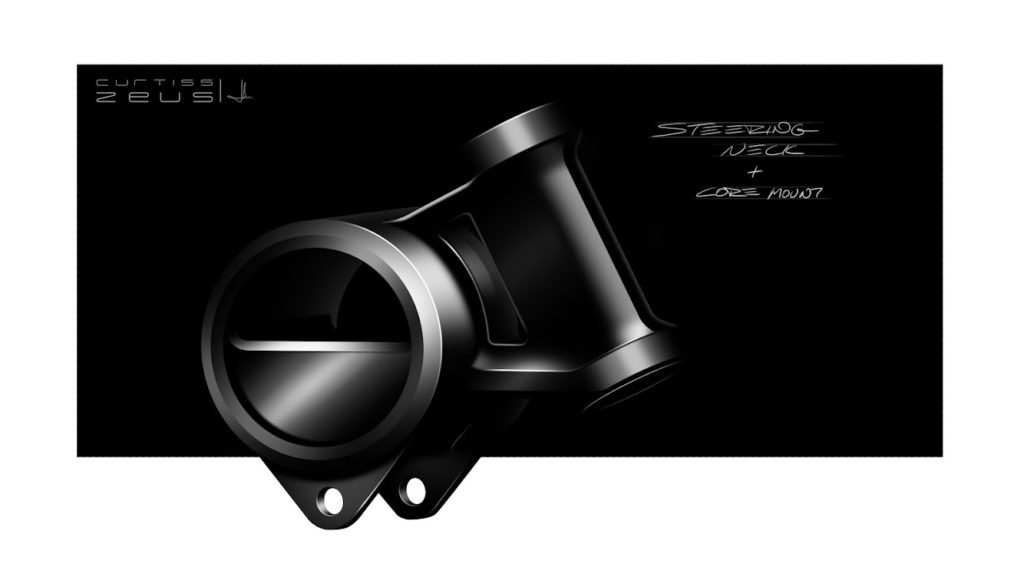
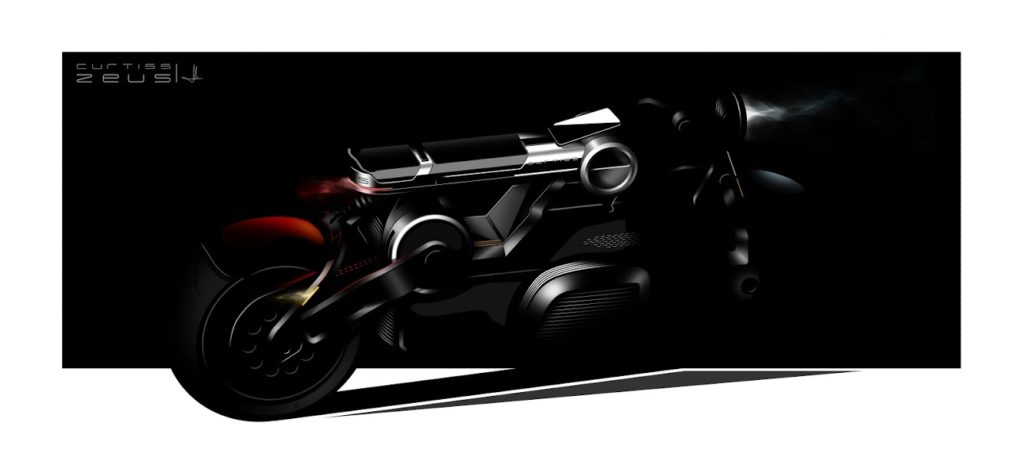
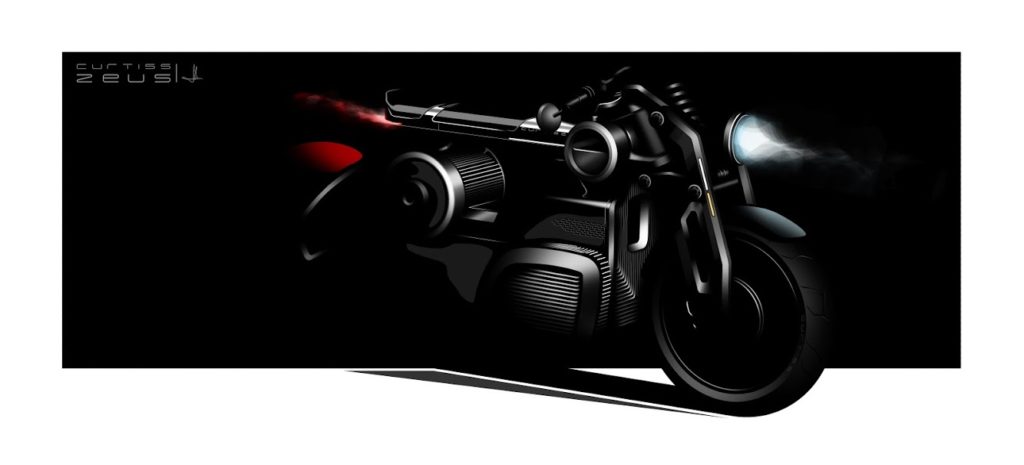
Related Posts
November 29, 2017
The Current: Confederate No More – Meet the Curtiss Motorcycle
After 25 years, Confederate Motors…
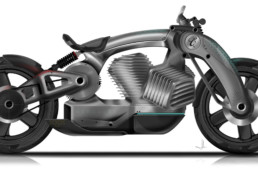
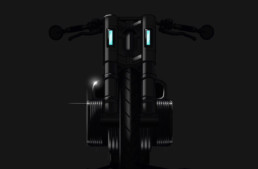
Wow, I hope I don’t come across a an “snarking troll” but this thing was shown without it’s “T” battery and won a “innovation” award in non-running condition. The guys pushing it to the award area clearly were moving something that wasn’t what may become the “world’s first 1000 lb motorcycle”. Nice try Confederate but this bike is another boutique bobble for rich boys. $30,000 price using solid aluminum billet throughout… yeah right!
Can’t imagine why their stock tanked 50% after it was shown!
(And has anyone told the truant officer at that “designer’s” high school that he is ditching classes again)
Like we said…
Guess you may be right about it being a 1000lb beast.
But from a practical point of view that may be the only way the rear wheel will find traction. Pivoting the swingarm on the drive sprocket centerline is a rookie error that needs to be addressed. The trick is to balance squat, anti-squat and front suspension weight loading when accelerating out of corners. All done with the correct positioning of the swingarm pivot location.
Maybe it’s “designed” to make the riders not take chances (as in having fun). Dropping this tank might cause embarrassment. You’d have to be a power lifter to pull it up off the ground. Maybe an extra battery for electronic uprighting assist?
Actually, with a chain drive, centering the sprocket exactly on the swingarm pivot is ideal, as chain tension will be consistent throughout the range of rear wheel motion.
Sorry Paul, can’t back you up on that.
Constant chain tension is not what modern bike designers are looking for when setting up swingarm geometry for something with this type of power output. Sticking that torque (270ft/lb) to the ground through the tire contact patch requires the bike to squat under acceleration from chain pull. A standard engineering principle not applied here.
This isn’t the first motorcycle with 275ft-lbs of torque (the Boss Hoss has about that), and yes, standard engineering principles always apply. Where would you ideally put the final drive sprocket if not on the swingarm pivot?
There are some very suspect aspects of it’s design in regards to ergonomics and that “seat”, but the more I see of this thing the more I like it! It’s refreshing, I really want to see it in the metal, and I want to see what a human being looks like onboard!
Paul, where would you ideally put the drive sprocket? Is that the question you are asking?
Well the obvious answer would be where every MotoGP engineer puts it (and 99.9% of every other type of motorcycle puts it). Behind the drive sprocket! But thats not the answer that could apply here. Due to electric motor layout several optimal options open up. The Lightning electric bike actually puts it in the ideal location, IN FRONT of the drive sprocket. There are several online articles on anti-squat that outline optimal geometry that are very informative and that you might want to refer to in the future.
But hell I might be wrong. 40 years designing high performance bikes may have left me without the knowledge required to make common sense decisions. I’ll acknowledge your expertise in these matters as web host.
(Oh and nice reference to the Boss Hoss motorcycle… not sure where you were heading with that one. Guess it refers to 1000 pound gorilla bikes finding traction through sheer mass!)
I’m no engineer, just a well-read enthusiast, and my motorcycle engineering information comes from the likes of Phil Irving et al, writing 40 years ago and more! So I’ll check out the ‘anti-squat’ theory, and how the final drive sprocket location alters what was considered ideal in previous generations. I reckon the 100hp max power Irving wrote about didn’t cause such big changes in chassis geometry under load with a chain drive. There are always practical issues compromising the ‘ideal’ location of anything on a motorcycle, especially the drive sprocket, as things like gearboxes get in the way, but we’ve seen some amazing solutions attempted!
The Boss Hoss is a real motorcycle, outrageous as it is, and the only street bike I know of with 275ft-lbs of torque. The later editions are supposed to handle surprisingly well – not GP well, but by cruiser standards…which is a low bar for anyone with sporting inclinations. Yes, traction through mass, and even that isn’t enough I’m sure!
The Lightning bike actually makes this same mistake and is punished for it in the handling department. I was a pixel pusher there before Alta, and it wasn’t until working under Jeff and Derek at Alta that I realized so many bike design fundamentals were thrown out the window with that bike, and not in a cool, rebellious way. More like an ignorant way.
I see the same thing happening here. I wish I could defend it, but I can’t. It’s a major miss.
But…a Lightning won Pike’s Peak three years ago, so it can’t handle that badly?
I’m no engineer either. I just made me a couple of little drawings , which tell me this:
Case A, swingarm pivot somewhere between axle and sprocket. The pulling chain will tend to compress further an already slightly compressed suspension, and tend to decompress an already decompressed suspension.
Case B, swingarm pivot beyond sprocket location. A deflected suspension will tend to return to neutral swingers position by the chain pull, regardless which way the swingarm points.
Case C, swingarm pivot coincides with sprocket: no chain pull influence on suspension.
I don’t know who they are marketing this to. Millenials with too much money do not ride motorcycles and older guys with too much money don’t ride anymore. The motorcycle industry is in distress because there is a super glut of high end used bikes for sale and no buyers. E Bikes may be somewhat of a solution but this big clunker isn’t.
A single paragraph that sums up the motorcycle industry.
I give it top marks for trying to avoid the trap of faking ICE proportions and looks. Harley hasn’t been criticized for being too heavy (just kidding) so why start here? Too much power is just enough, right? Who cares about weight, when you get power and distance in return.
I am worried about the motorcycle industry.
A motorcycle is needed that is user friendly and
can carry two people. It needs to have some kind of sound.
Many young people will be killed if car drivers cannot see it and cannot hear it.
Will self driving cars detect it? No car adds on TV even show a motorcycle in a
self driving car environment. This electric motorcycle looks clunky and has no beauty to it.